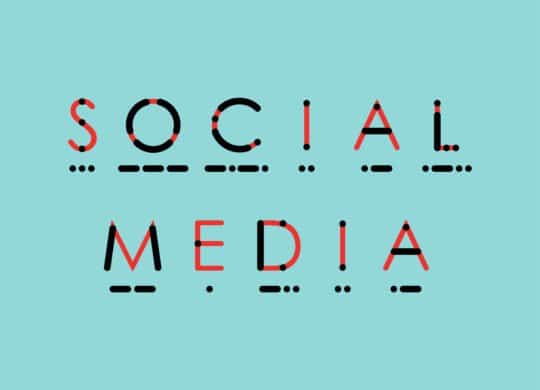At least one billion people (15% of the world’s population) experience some form of disability. This statistic does not include individuals who may experience temporary or situational disabilities at one point throughout their lives.
So what does that mean for social media, you may ask? A lot. Let’s talk about social media accessibility. Digital.gov describes it as a way to ”ensure that messages are reaching the largest audience, including those with disabilities.” Whether you manage your brand’s social media presence or are active on your own personal social accounts, it is important that we all take responsibility in creating a well-rounded social media experience for everyone. Here are five ways to be more inclusive and accessible on social media for all audiences.
- Use accessible text.
When writing for social media, it is easy to think that everyone is processing information the same as you. But oftentimes, we forget that our audience consists of diverse individuals who come from different backgrounds and experiences. Using accessible text—text that describes content for screen reader users—allows for everyone to experience your brand online, regardless of whether or not they have a hearing or visual impairment. It also improves the experience for those who use screen readers or VoiceOver tools when on social media. Lastly, accessible text not only assists those with hearing impairments, but it is also helpful to those watching with their phone audio off and language learners.
A few best practices to keep in mind when crafting social media copy include typing similar to how you talk, placing mentions and hashtags at the end, avoiding special characters when possible, using inclusive language/pronouns, focusing on easy-to-read copy, and not overusing all caps.
- Write descriptive captions.
When posting images to social media, you have the ability to create ALT text for each image that you are sharing. Business Insider describes ALT text as “the description that identifies the content of an image and allows screen readers to describe your photos to blind or visually impaired users.” Platforms like Instagram, Facebook, Twitter, and Pinterest all have ALT text capabilities for images.
In your post and ALT text caption, try to keep the experience of those who have visual disabilities in mind. Mentioning colors, avoiding the obvious “image of…”, and describing the context of your content are all simple and quick ways to care for those in your audience who might experience a form of disability.
- Include video captions, video captions, and more video captions.
Provide copy for what is said on Instagram and Snapchat Stories, create your own captions by typing “CC:” on TikTok videos, and transcript audio for all other video content when there is audio present. Whether your audience enjoys scrolling through social media with their sound off (like me) or indeed has a hearing impairment, captioning your videos increases video retention and post engagement and allows for all users to fully enjoy your video content.
- Remember that representation > utility
Just because you use accessibility features does not mean that your social media platforms are inclusive–there are other ways to measure inclusivity. Does your content speak to all demographics and sexual orientations or does it overspeak to young, straight, white individuals? Who is reflected in your imagery? What gender pronouns do you use in your text/copy? All of these questions are important for your brand to reflect and discuss. Of course, your brand’s target audience is top of mind when writing social media content, but the nature of social media means that it can–and will–be seen by those outside of your target audience and should be written with that in mind.
- Stay updated and do your research.
As all social media gurus know, social platforms are constantly changing. It feels like once a week my Instagram app is updating to improve yet another “bug.” Keeping up with the latest platform updates is vital not only to stay on top of your social media marketing game but also to prioritize accessibility. Facebook, TikTok, Instagram, and Twitter all have updated their platforms over the years to do their part in creating more inclusive experiences through automated closed captions, image ALT text, and voiceover functions. I encourage you to check out and use these features for your brand and yourself.
Most brand’s social media strategy and brand guidelines address design, copy, voice, photography, and so on. However, what many brands forget is mapping out inclusive design and strategy. Without social media accessibility, your brand is missing out on an opportunity to connect with its full potential audience and can turn away audiences that you might fail to represent and consider.
How are you promoting accessibility and inclusion online? Contact FUEL for a social media audit today.







